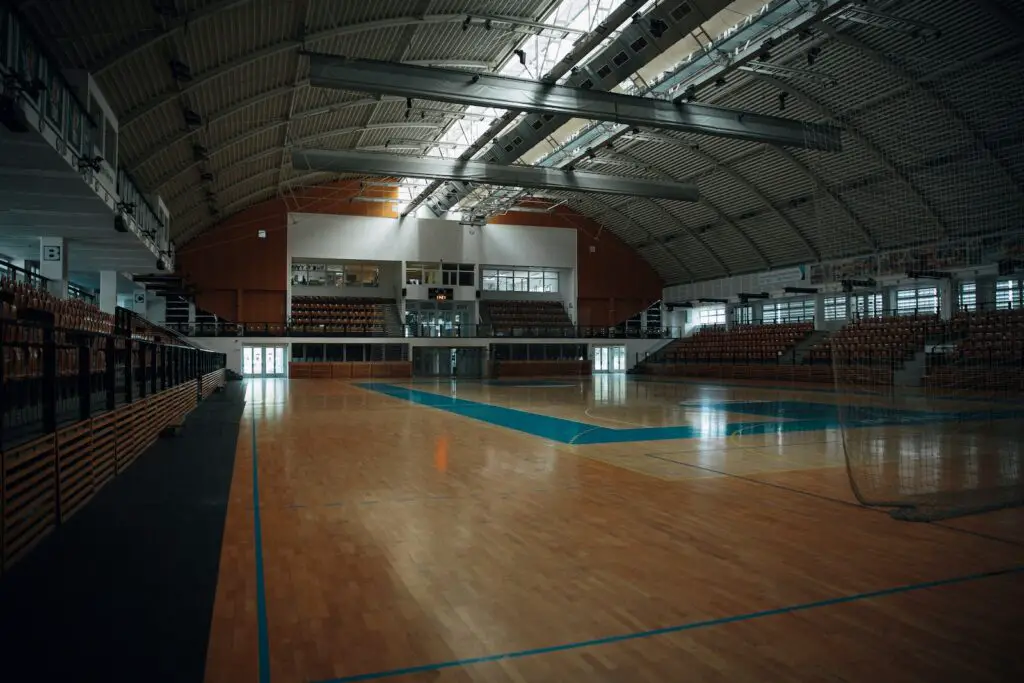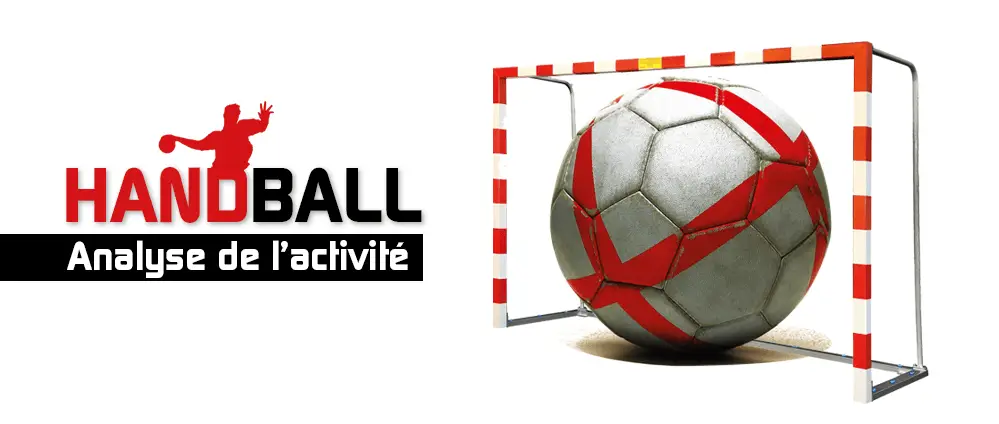We will look at the action of shooting the most commonly considered movement in handball and surely the most important individual ability for the success of a team and break it down into its different components not only the movements but also the key anatomy. By doing this you will have a better or more practical understanding of why certain exercises are better than others when it comes to handball, and why certain areas need to be targeted more than others too.
“The relationship between strength training and throwing speed was examined in team handball players – and the results clearly indicate greater throwing speed in athletes who combined a strength training program with their training normal.”
The shoulder – and the throw/pull
Based on research by Grethe Myklebust (which we look at in more detail in the section strength training ), the most common upper body injuries occur to the shoulder and fingers, with the shoulders accounting for the majority of overuse injuries of the upper body.
“Knowledge about overuse injuries in the upper extremities is scarce, but a study among German male players showed that 40% of 25 players examined had been limited by shoulder pain during training and play at over the previous 6 months. The high prevalence of shoulder problems was later confirmed in a study of elite Norwegian female players. Among the 178 players tested, 57% reported current or previous shoulder pain. Forty-nine (67%) of players who reported pain were limited by a reduced training performance and 24 (34%) could not play a match because of pain.”
Grethe Myklebust
Between basketball and rugby: the risk of handball injury
This high prevalence of shoulder injuries is not surprising considering the large number of throws made as well as the high speed and velocity of these throws in handball, particularly during penalties. Of course, much of the shooting movement comes from the legs, hips, and torso, but this last part of the movement, which also happens to be the fastest and most impactful, is performed by a group of muscles proportionally small, and this, day after day, week after week.
To understand the shoulder problems associated with handball, and truly appreciate the work of the main muscles involved, we need to look at a little anatomy. We want to keep the information presented here relevant and usable. So we promise this won’t be an in-depth discussion with lots of technical terms, but just a quick overview of the key parts.
When we talk about the role of the shoulder in throwing, and especially shooting, we are not so much talking about the large deltoid muscle which is shaped like an upside down drop of water at the top of the arm, but rather about a deeper layer of muscles located in front and behind the shoulder blade (or thescapula).
In the image above you can see on the left the muscles around the shoulder and upper back which you recognize as they make up the most superficial layer of muscle and lie just under the skin. These are the muscles that bodybuilders seek to develop, because it is this layer of muscle that the judges can see. However, if you remove this layer, as was done on the right side, you will see the rotators we are talking about. The image below shows them a little closer, both on the front and back of the shoulder blade.
The two images are of the right arm/shoulder, with the left one seen from the front and the right one from the back (as in the image above). So there are three at the back and one at the front, and they all attach to the scapula and the humerus (the upper arm bone).
You don’t need to remember their different names, nor do you need to know in detail which ones are primarily responsible for the various shoulder rotation actions in throwing motions (as each plays different roles in the various actions). All that’s really relevant to your own training is understanding that this relatively small muscle group plays a big role in the action of throwing, a particularly explosive action during a shot. Furthermore, it is this group of 4 muscles that provides the main stabilizing forces of theshoulder (where the head of the humerus or upper arm bone meets the glenoid fossa or shoulder socket to create the glenohumeral joint) – a joint which, by its very structure, is susceptible to injury. These are also the muscles that are most commonly injured through overuse as well as acute injuries such as dislocation, and are most often the cause of problems when a player complains of soreness or strain. shoulder discomfort.
When considering the role of the shoulder and arm in the throwing action, it is important to realize that these rotators are not only important in providing acceleration and rotation in the throwing action, but also very important for decelerate (eccentrically) the action after the ball is released. If you don’t do this, you risk dislocating your shoulder with every explosive throw. This is something we take for granted when shooting because we don’t really take into account the deceleration of the arm after the throw, but it’s important to recognize because these muscles absorb a tremendous amount of force. Additionally, it is in the deceleration portion of rapid, explosive movements that most injuries occur rather than in the acceleration phases (running being the other most common example), meaning that this point has even more importance.
“Specific imbalances and deficits in the strength and function of certain rotator cuff muscles are characteristically found in the sports of throwing and overhead striking. The repeated execution of ballistic movements of “Throwing or striking during training and competition can lead to progressive weakness of the muscles that work to decelerate the humerus and stabilize the glenohumeral joint.”
Paul Gamble
Strength and Conditioning for Team Sports
“Significant imbalances in the shoulder muscles have, in fact, been shown in handball players as a consequence of their normal handball training and such imbalances present a greater risk of injury.”
Marco Cardinale
So what do we do for the shoulder?
The two specific areas we should look to target in the shoulder are the external rotators of the shoulder and scapula stabilizers.
The external rotators are targeted because athletes in all throwing sports and many racquet sports (especially tennis) are known to develop an imbalance between the internal rotators and external rotators of the shoulder. If your internal rotators (those that accelerate the rotation of the upper arm during a throw) are proportionally stronger than the external rotators (those that decelerate the rotation of the upper arm during a throw), the The likelihood of strains, or at the very least pain, developing in the shoulder over time, given the high number of throws, is quite high.
The scapula stabilizers are targeted because they provide the platform from which the movement is initiated (in this case, the powerful, explosive throwing movement). So, in the same way that the core of the inner unit functions as the platform from which the muscles of the outer unit initiate the movement, the stabilizers around the scapula can be considered to serve an equivalent function in the shoulder. To do this, we carry out a combination of open chain exercises and closed chain exercises. Closed chain exercises can be considered those where the extremities (in this case the arms) cannot overcome the resistance they face (such as with the hands in contact with the ground – resistance that the arms cannot overcome and move). These exercises are the perfect place to start and warm up by targeting the stabilizers. However, because the shoulder functions in an open chain environment, where the extremities are free to move, the goal should be to train the stability of the shoulder in an open chain – which we achieve through shoulder exercises. open chain stability and open chain compound shoulder strength exercises.
Alternate Supermans
4-pointers are a very good closed-chain shoulder stability exercise, and the Prone Crawler (in this case demonstrated on the Swiss Ball) is a very challenging open-chain shoulder stability exercise.
“The 4-point exercises are not only effective in rehabilitating the shoulder complex, but also in reintegrating the shoulder into the torso and lower body.”
Paul Chek
Posture is also a very important element for the integrity and functionality of the shoulder joint.
“Functional problems with the shoulder complex are not always the result of activity; poor posture can also place the shoulder blades in a prolonged (pulled forward) position, creating a “rounded shoulder” posture. . Physical preparation errors can have a similar effect on the position of the shoulder blades: unbalanced development of the front legs (especially the chest) can lead to a prolonged resting posture.”
Paul Gamble
Strength and Conditioning for Team Sports
In other words, doing too many pushing exercises and not enough pulling exercises will ultimately lead to postural problems, and therefore shoulder problems. In fact, world-renowned trainer Christian Thibaudeau states that “The best ratio of pulling to pushing exercises is 2 to 1, meaning you should pull twice as much volume as you squeeze. Any pull counts and some pull exercises can be included in each session“.
However, this doesn’t necessarily mean doing a lot of weighted pulling exercises every day, just that you need to perform some form of pulling movement every day, which can be something you need to do. ‘as simple as shoulder retractions with a band.
Christian explains his thinking in a little more detail in this short video here. Regardless, the importance of maintaining a good balance between pushing and pulling should not be underestimated.
“I often ask people to train with a 1:2 ratio in volume for pushing and pulling, because many people have ignored pulling for so long.”
Dan John
This discussion point about how pulling and pushing relate to the health of your shoulder is also closely related to another discussion we had regarding the bench press and handball.
Throwing and shooting is not limited to the shoulder and arm.
Throwing, and especially shooting, is much more than just a movement of the shoulders and arms. Rather, it is about the coordination and expression of the whole body. Therefore, in the second part of this discussion, we will begin to move down the chain, looking at the other essential components.
The teaching of the first part, the importance of external rotators and scapula stabilizers for shoulder health and performance, is developed by a combination ofclosed chain exercises, thenopen chain exercises more dynamic.


